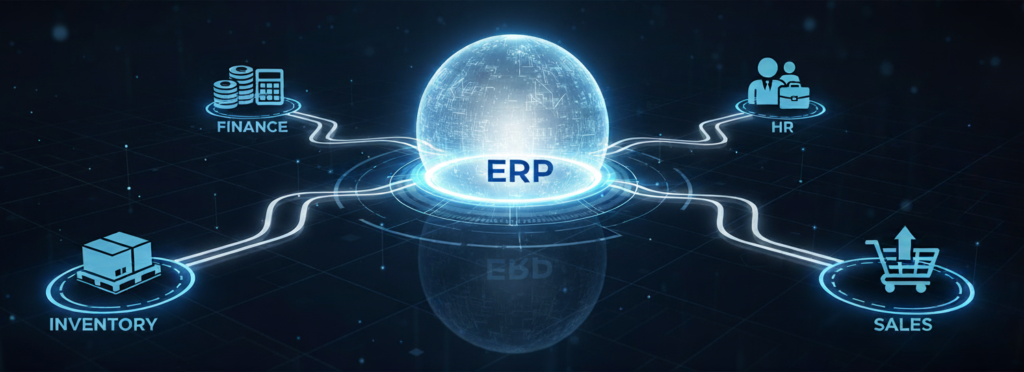In today’s competitive environment, maintaining a healthy cash flow is crucial for any business. One of the most common disruptions to cash flow comes from late payments or unpaid invoices, which can significantly affect financial operations.
Traditional manual methods of managing overdue payments are often inefficient, labor-intensive, and prone to human error. This is where an automated dunning process becomes invaluable. In NetSuite, automating the dunning process can revolutionize how businesses handle overdue payments, ensuring that accounts are settled more quickly and reducing the administrative burden on the finance team.
An automated dunning process simplifies communication with customers by sending pre-scheduled reminders and notices for overdue payments. Instead of manually tracking each late payment, businesses can rely on a system that automatically issues invoices and reminders based on the payment terms set for each customer.
This ensures consistency in follow-up efforts and increases the likelihood of payment recovery without requiring manual intervention. Automation also allows businesses to maintain a positive relationship with their customers, as reminders are sent out systematically and professionally, avoiding the need for direct and potentially uncomfortable confrontations over late payments.
By integrating an automated dunning process in NetSuite, businesses can significantly enhance their revenue management strategies. The system allows for personalized and multi-tiered dunning workflows, enabling companies to escalate the severity of payment reminders based on the customer’s response.
This reduces the risk of long-standing overdue accounts and improves the overall financial stability of the business. Furthermore, automated dunning helps optimize internal operations, allowing finance teams to focus on higher-value tasks rather than chasing down late payments. Ultimately, this leads to improved efficiency, better cash flow, and a more resilient financial foundation.
Understanding the Dunning Process: Key Elements
The dunning process refers to the structured steps a business takes to follow up with customers who have overdue payments. This process generally begins with sending reminder emails or notifications to customers who have not met their payment deadlines.
These reminders are designed to inform the customer of the overdue amount and encourage immediate action to settle the debt. Often, communication includes a clear breakdown of the outstanding balance, due dates, and the initial terms of the agreement. By outlining these specifics, businesses ensure that customers are fully aware of their financial obligations and the need to address them.
Additionally, dunning emails often highlight the potential consequences of continued non-payment, such as late fees, interest charges, or suspension of services. These communications are typically sent in escalating levels of urgency. The first reminder may be a polite nudge, while later notices might include firmer language indicating the need to avoid further penalties or legal action. This escalation process ensures that customers are given multiple opportunities to rectify their outstanding balances before more severe measures are implemented.
Advantages of an Automated Dunning Process
Implementing an automated dunning process brings a variety of benefits that can significantly improve business operations. By automating this critical financial function, companies can efficiently manage overdue payments without wasting valuable time on manual follow-ups.
One of the primary advantages is the ability to reach out to customers quickly and consistently, ensuring that reminders about unpaid invoices are sent out at the right intervals. This quick response can prevent delays in payments and enhance the likelihood of customers settling their accounts promptly.
Automation eliminates the need for manual intervention, freeing up resources and allowing teams to focus on more strategic financial tasks. Another key benefit is the consistency in communication that automated dunning offers. Businesses can standardize the content of their dunning messages through templates, ensuring that every customer receives professional and consistent reminders. This helps maintain a uniform approach in payment collections while avoiding the variations that can arise with manual efforts.
Additionally, automated emails allow businesses to keep accurate records of each interaction, making it easier to track payment statuses in real time. With this feature, finance teams can stay updated on customer accounts and take timely action, reducing the chances of overdue invoices falling through the cracks.
Enhanced Customer Engagement and Cash Flow Management
Automated dunning also enhances customer engagement by sending reminders promptly, which increases the chances of receiving a response. Customers are more likely to act when they are reminded in a timely and consistent manner about their outstanding payments.
This proactive approach not only improves the efficiency of payment collection but also strengthens the relationship between the business and its customers. By maintaining open lines of communication, businesses can avoid misunderstandings regarding unpaid invoices and foster trust with their clients.
Perhaps one of the most significant advantages of an automated dunning process is its impact on maintaining a healthy cash flow. Since payments are collected more quickly through consistent and timely reminders, businesses can avoid the cash flow disruptions caused by overdue invoices.
This steady inflow of revenue allows companies to operate more smoothly, meet their financial obligations, and invest in growth opportunities. An automated dunning process is not just a tool for collecting payments; it is an essential strategy for ensuring financial stability, improving operational efficiency, and supporting long-term business success.
Overview of the Dunning Letters SuiteApp in NetSuite
The Dunning Letters SuiteApp in NetSuite is a pivotal tool designed to improve the efficiency of the collections process, allowing businesses to manage overdue invoices more effectively. By automating the sending of dunning letters, this tool helps companies reduce their Days Sales Outstanding (DSO), which in turn enhances cash flow and minimizes the risk of bad debt. With a well-implemented dunning system, companies can ensure that follow-up reminders are sent consistently, helping to boost payment collection and improve financial health.
A structured dunning process also brings clarity to collections, enabling better oversight and management of outstanding debts. NetSuite’s SuiteApp ensures that collections staff are more efficient, allowing them to focus on high-priority tasks rather than manually tracking overdue payments.
This automation significantly cuts down on the time spent on administrative follow-up, thereby allowing businesses to focus more on their core operations. However, while the SuiteApp does simplify the dunning process, some limitations may hinder its overall effectiveness for businesses with more complex needs.
Challenges Associated with the Dunning Letters SuiteApp
Despite its advantages, the Dunning Letters SuiteApp in NetSuite is not without its challenges. For example, the app is only available to accounts that have enabled the Multiple Currencies feature, limiting its accessibility for businesses that don’t meet this criterion.
Additionally, the Custom Statement Form field lacks the flexibility to filter transaction forms by type, which can hinder the ability to create tailored dunning templates. Moreover, the Dunning Manager and Default Dunning Manager fields are limited, as they cannot filter employees based on their roles, which can make it more difficult to assign responsibility for specific collections tasks.
The SuiteApp also has several functional limitations that can impact larger businesses or those with more complex collections procedures. Users are restricted to a maximum of 15 dunning levels per procedure, which may not be sufficient for companies with varying levels of escalation for overdue invoices.
Furthermore, the size limit for generated PDF dunning letters is capped at 5MB, and if the file exceeds this, it is automatically split into multiple attachments, which can be cumbersome for recipients.
The SuiteApp’s ability to process and send dunning letters is capped at 100 letters per queue, which could be a bottleneck for larger operations. Lastly, the SuiteApp does not support importing dunning procedures via SOAP web services or SuiteScript, and it cannot identify bounced email messages, requiring manual intervention in such cases. These limitations can make the dunning process less efficient for businesses with complex or high-volume collection needs.
Key Best Practices for NetSuite Dunning Management
Managing dunning processes effectively in NetSuite requires following specific guidelines and best practices to avoid common pitfalls. One of the primary recommendations involves how new dunning records are created.
Administrators should avoid using the “New” option from dropdown lists or the plus icon when creating new records such as Dunning Procedures, Dunning Levels, and Dunning Templates. Instead, it is advised to navigate through the Dunning Setup menu to ensure all necessary fields are accurately captured. Failure to do this may result in the incorrect configuration of key fields, which can disrupt the dunning process.
This method applies to fields like Dunning Pause Reasons and other critical dunning configurations that are essential for maintaining proper account receivable functions.
Another important practice in ensuring a smooth dunning process involves using only standard NetSuite fields when creating saved searches for filtering. Fields from third-party SuiteApps may pose risks, especially when those apps undergo updates or modifications that could remove or change the fields used in dunning procedures.
Relying on custom fields from non-NetSuite SuiteApps can lead to errors, affecting the efficiency of dunning operations. As a precaution, always ensure that saved searches tied to dunning rules use only native NetSuite fields to prevent such issues. This practice ensures long-term stability in the dunning workflow, especially for large-scale operations handling significant numbers of overdue accounts.
Enhancing Dunning Procedures and Templates for Efficiency
NetSuite users should also be aware of potential system limitations, particularly when it comes to the length of segment lists in General Preferences. A segment list exceeding 250 items can cause errors that may interfere with dunning procedures. Keeping the segment list concise helps maintain the integrity of the system and ensures smooth operation without unnecessary disruptions.
This is particularly crucial for businesses dealing with a high volume of customer records and segmented financial data. Regular review of your general preferences and settings is recommended to avoid such errors.
In addition, updating customer records in bulk is an essential task, especially after dunning procedures have been assigned to both customer and invoice records. NetSuite recommends using the Bulk Update Customer Records page to carry out this task. Doing this once after the initial setup will help keep customer and invoice data in sync, ensuring that dunning letters are sent accurately based on the correct procedures and templates.
It is also essential to review NetSuite’s Best Practices for Creating and Using Dunning Templates before starting the template creation process. Following these guidelines will optimize the configuration and execution of dunning processes, leading to more efficient collection efforts and improved cash flow management.
Conclusion – Enhancing Financial Stability and Long-Term Growth
By following best practices and utilizing advanced dunning solutions, companies can ensure a smoother collection process, ultimately improving their financial health and stability. Effective dunning not only helps businesses maintain a steady cash flow but also strengthens customer relationships through timely reminders and professional communication.
This proactive approach to debt recovery fosters better customer engagement and loyalty while minimizing the need for more aggressive collection strategies that could harm the business-client relationship.
An efficient dunning process, supported by advanced tools and best practices, is critical to long-term success. Implementing a flexible and customizable solution such as the EPIQ NetSuite Dunning Solution allows businesses to mitigate the limitations of default tools while ensuring that their collections processes are optimized for growth. By improving the accuracy and effectiveness of collections, businesses can reduce financial risks, enhance cash flow, and create a more stable foundation for future expansion and profitability.







